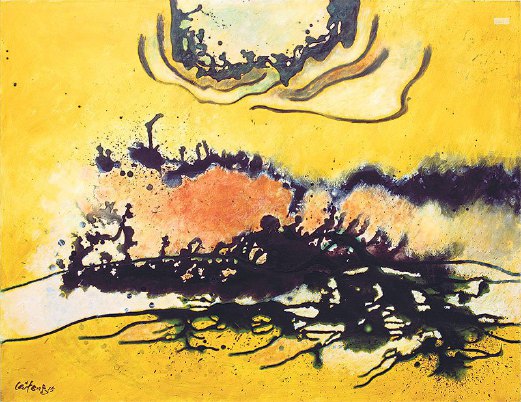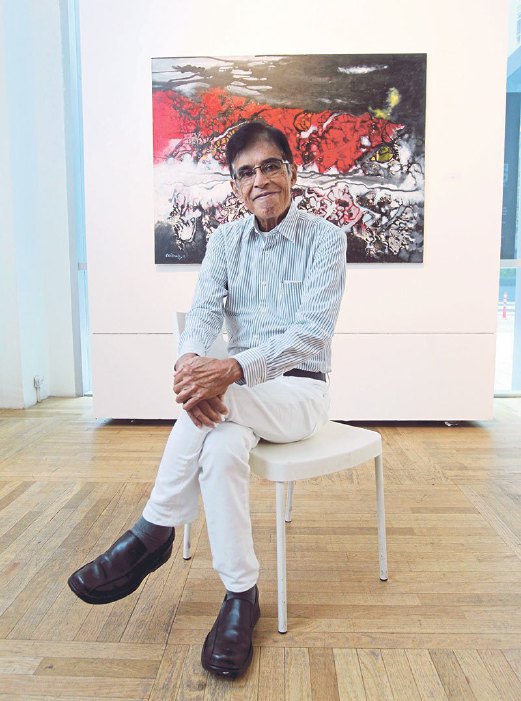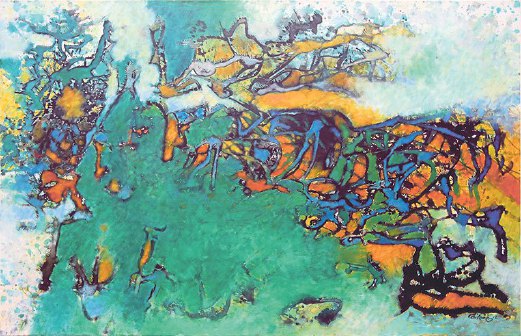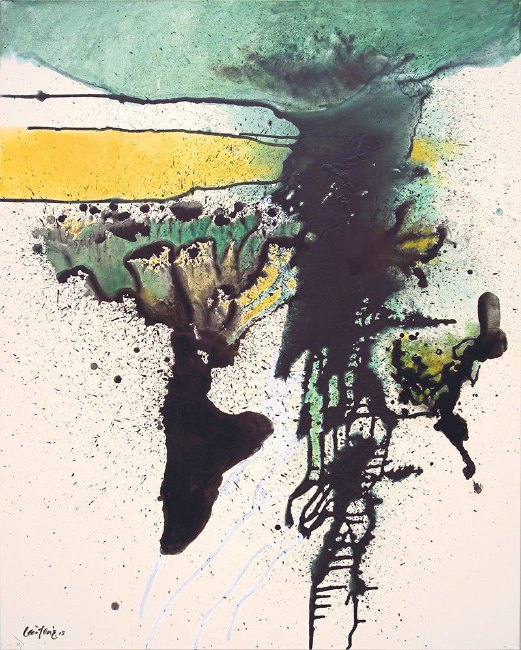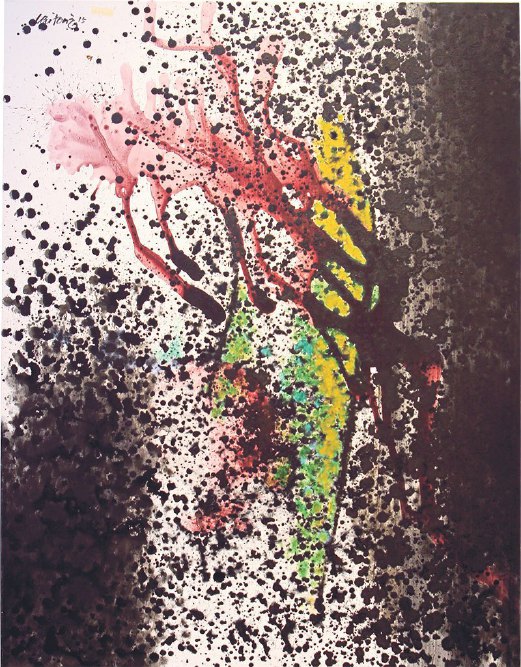Let the imagination roam when it comes to deciphering artist Cheong Laitong’s penetrating canvas, writes Sarah NH Vogeler
ART, such a strange and intriguing universe, our heads spin 360 degrees a la Regan MacNeil in the horrifying William Friedkin film The Exorcist.
Yes, sometimes there’s projectile vomiting from absorbing too much, too little or nothing at all. All ways are good.
There’s an abundance of all that in artist Cheong Laitong’s exhibition, Intuitions 2015, held recently at Publika, KL’s White Box. The pop-up show by NN Gallery showcased paintings from 2012 to now and though much has been said of the works being different and new, that isn’t the point, not entirely anyway.
It is true the artist’s paintings contain a certain jauntiness, finery and warmth, especially in his former works, but what makes the latter ones even more odorous, is that they are less-controlled. It is as if Laitong suddenly abandoned all faculties, stole Regan’s ouija board and painted as possessed by one Captain Howdy.
As for pop-up shows, Intuitions 2015 has been one of the better ones this year for three reasons. One, the works were arranged in a competent manner, anything lesser, the room would resemble an abode after a three-day combined Marilyn Manson-Phil Spector soiree. Two, the artist was seen at the opening of his show relentlessly explaining his “thoughts progressions” on everything but his art to somewhat baffled-looking guests scowling into their drinks. You cannot blame them. Laitong speaks little of his creations. “My art has always been a reflection of my feelings through physical actions. It’s up to you to catch it”.
The perennial questions: Can you catch it? Are you supposed to? What if the man refuses to say anything?
In terms of pop up art shows, one of the earliest which came around was in 2004, when cutting-edge fashion brand maestro Rei Kawakubo of Tokyo-based Japanese label Comme des Garcons (French for “like boys”) put up an impermanent atelier in a derelict building in Berlin. It has since burgeoned, some out of this world, some exercises in humiliating mediocrity, while others are simply mind-blowing. After all, pop-up shows are a brilliant tactic of making more serious use of urban spaces, as Laitong’s show in Publika demonstrated.
Intuitions 2015 is dark, neurotic and penetrating and refined in a chaotic way, if such an expression is acceptable. His colours have deepened, although his themes have remained consistent. Organiser extraordinaire Nabil of NN Gallery was accurate in observing Laitong’s immense dislike to speak about his works. So you don’t ask. Instead we end up speaking of his family, how happy he is to be surrounded by friends, by those he loves. After that you wander around the makeshift gallery just staring at those canvases and battle internal guerilla war fares attempting to make sense of the works.
POWERFUL WORKS
A thing one immediately notices about Laitong’s works is this: The more you look, the more powerful the mien becomes. They’re sexless, yet explosively sexual. These are what makes the works work. They are ghosts, obscurities. It is the intensity that should get under the viewer’s skin. Let’s just call it the Laitong Effect and stop likening it to Rauschenberg or Rothko or Pollock. That is just preposterous... and disastrous.
Laitong uses simple means to give audiences hints at his state of mind, in his own way.
I read once that art was supposed to be dirty, that even in the most beautiful paintings, there exists an “ugliness” so subtle, like a hairline fracture which hurts so much it makes you want to stab yourself in the heart. Yet it is those strange elements which make the works ever so more compelling, potent, elemental.
His works do thrill because we can’t possibly know for sure what they signify, that “catch it if you can” quote replays inside the mind like an Edith Piaf song. Laitong implores us to purely rely on our imagination to decipher his illustrations. And for some of us who can, it is nothing short of a miraculous act. His canvas is the unforgiving adversary, of which he must fully conquer.
In remembering Piaf, here’s (l’Enseigne de la Fille sans Cour) At The Heartless Girl, recorded in 1951:
Le patron connaissait la musique:
Il aimait le son des ecus
Il disait a sa fille unique:
“Fuis l’amour, c’est du temps perdu!”
Mais un soir, la mer faisait rage...
On vit entrer un etranger
Aux beaux yeux d’azur sans nuages
C’est alors que tout a change..
(The boss knew his stuff:
He liked the sound of coins
He said to his only daughter:
“Avoid love, it’s a waste of time!”
But one night, the sea was raging...
In came a stranger
With beautiful eyes of blue without any clouds
That’s when everything changed.)
Laitong, the boss who knows his stuff and wouldn’t spill a thing even if the sea rages across the world.


